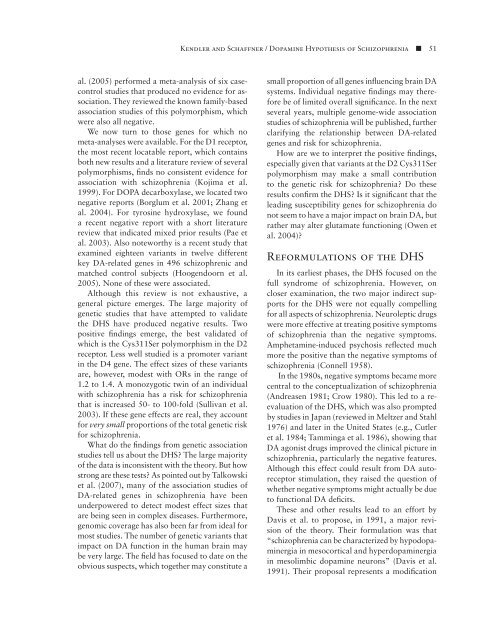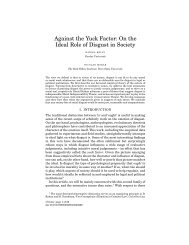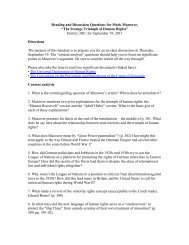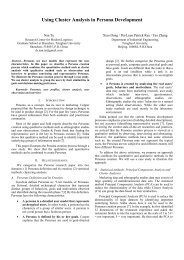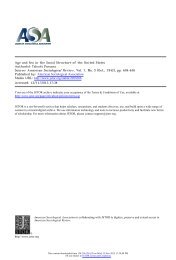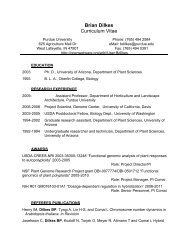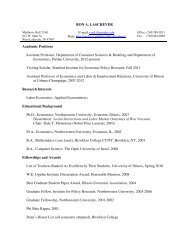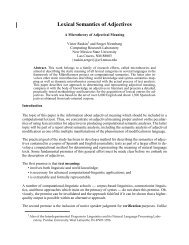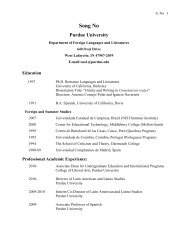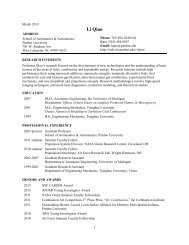The Dopamine Hypothesis of Schizophrenia: An Historical and ...
The Dopamine Hypothesis of Schizophrenia: An Historical and ...
The Dopamine Hypothesis of Schizophrenia: An Historical and ...
You also want an ePaper? Increase the reach of your titles
YUMPU automatically turns print PDFs into web optimized ePapers that Google loves.
Kendler <strong>and</strong> Schaffner / <strong>Dopamine</strong> <strong>Hypothesis</strong> <strong>of</strong> <strong>Schizophrenia</strong> ■ 51<br />
al. (2005) performed a meta-analysis <strong>of</strong> six casecontrol<br />
studies that produced no evidence for association.<br />
<strong>The</strong>y reviewed the known family-based<br />
association studies <strong>of</strong> this polymorphism, which<br />
were also all negative.<br />
We now turn to those genes for which no<br />
meta-analyses were available. For the D1 receptor,<br />
the most recent locatable report, which contains<br />
both new results <strong>and</strong> a literature review <strong>of</strong> several<br />
polymorphisms, finds no consistent evidence for<br />
association with schizophrenia (Kojima et al.<br />
1999). For DOPA decarboxylase, we located two<br />
negative reports (Borglum et al. 2001; Zhang et<br />
al. 2004). For tyrosine hydroxylase, we found<br />
a recent negative report with a short literature<br />
review that indicated mixed prior results (Pae et<br />
al. 2003). Also noteworthy is a recent study that<br />
examined eighteen variants in twelve different<br />
key DA-related genes in 496 schizophrenic <strong>and</strong><br />
matched control subjects (Hoogendoorn et al.<br />
2005). None <strong>of</strong> these were associated.<br />
Although this review is not exhaustive, a<br />
general picture emerges. <strong>The</strong> large majority <strong>of</strong><br />
genetic studies that have attempted to validate<br />
the DHS have produced negative results. Two<br />
positive findings emerge, the best validated <strong>of</strong><br />
which is the Cys311Ser polymorphism in the D2<br />
receptor. Less well studied is a promoter variant<br />
in the D4 gene. <strong>The</strong> effect sizes <strong>of</strong> these variants<br />
are, however, modest with ORs in the range <strong>of</strong><br />
1.2 to 1.4. A monozygotic twin <strong>of</strong> an individual<br />
with schizophrenia has a risk for schizophrenia<br />
that is increased 50- to 100-fold (Sullivan et al.<br />
2003). If these gene effects are real, they account<br />
for very small proportions <strong>of</strong> the total genetic risk<br />
for schizophrenia.<br />
What do the findings from genetic association<br />
studies tell us about the DHS? <strong>The</strong> large majority<br />
<strong>of</strong> the data is inconsistent with the theory. But how<br />
strong are these tests? As pointed out by Talkowski<br />
et al. (2007), many <strong>of</strong> the association studies <strong>of</strong><br />
DA-related genes in schizophrenia have been<br />
underpowered to detect modest effect sizes that<br />
are being seen in complex diseases. Furthermore,<br />
genomic coverage has also been far from ideal for<br />
most studies. <strong>The</strong> number <strong>of</strong> genetic variants that<br />
impact on DA function in the human brain may<br />
be very large. <strong>The</strong> field has focused to date on the<br />
obvious suspects, which together may constitute a<br />
small proportion <strong>of</strong> all genes influencing brain DA<br />
systems. Individual negative findings may therefore<br />
be <strong>of</strong> limited overall significance. In the next<br />
several years, multiple genome-wide association<br />
studies <strong>of</strong> schizophrenia will be published, further<br />
clarifying the relationship between DA-related<br />
genes <strong>and</strong> risk for schizophrenia.<br />
How are we to interpret the positive findings,<br />
especially given that variants at the D2 Cys311Ser<br />
polymorphism may make a small contribution<br />
to the genetic risk for schizophrenia? Do these<br />
results confirm the DHS? Is it significant that the<br />
leading susceptibility genes for schizophrenia do<br />
not seem to have a major impact on brain DA, but<br />
rather may alter glutamate functioning (Owen et<br />
al. 2004)?<br />
Reformulations <strong>of</strong> the DHS<br />
In its earliest phases, the DHS focused on the<br />
full syndrome <strong>of</strong> schizophrenia. However, on<br />
closer examination, the two major indirect supports<br />
for the DHS were not equally compelling<br />
for all aspects <strong>of</strong> schizophrenia. Neuroleptic drugs<br />
were more effective at treating positive symptoms<br />
<strong>of</strong> schizophrenia than the negative symptoms.<br />
Amphetamine-induced psychosis reflected much<br />
more the positive than the negative symptoms <strong>of</strong><br />
schizophrenia (Connell 1958).<br />
In the 1980s, negative symptoms became more<br />
central to the conceptualization <strong>of</strong> schizophrenia<br />
(<strong>An</strong>dreasen 1981; Crow 1980). This led to a reevaluation<br />
<strong>of</strong> the DHS, which was also prompted<br />
by studies in Japan (reviewed in Meltzer <strong>and</strong> Stahl<br />
1976) <strong>and</strong> later in the United States (e.g., Cutler<br />
et al. 1984; Tamminga et al. 1986), showing that<br />
DA agonist drugs improved the clinical picture in<br />
schizophrenia, particularly the negative features.<br />
Although this effect could result from DA autoreceptor<br />
stimulation, they raised the question <strong>of</strong><br />
whether negative symptoms might actually be due<br />
to functional DA deficits.<br />
<strong>The</strong>se <strong>and</strong> other results lead to an effort by<br />
Davis et al. to propose, in 1991, a major revision<br />
<strong>of</strong> the theory. <strong>The</strong>ir formulation was that<br />
“schizophrenia can be characterized by hypodopaminergia<br />
in mesocortical <strong>and</strong> hyperdopaminergia<br />
in mesolimbic dopamine neurons” (Davis et al.<br />
1991). <strong>The</strong>ir proposal represents a modification


